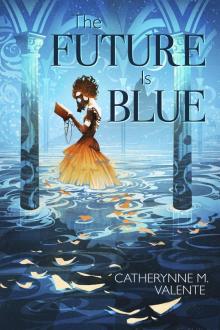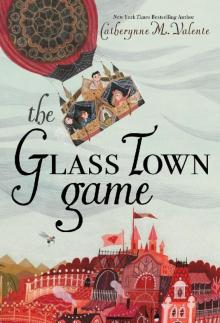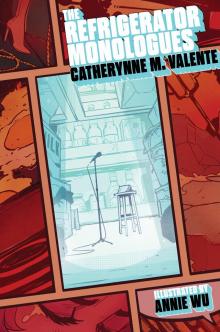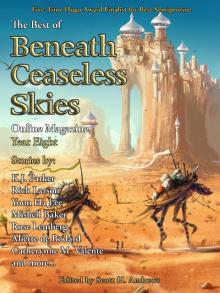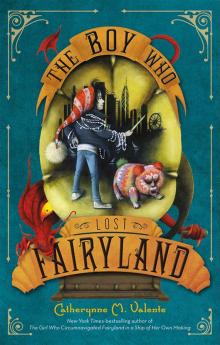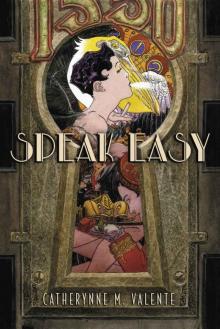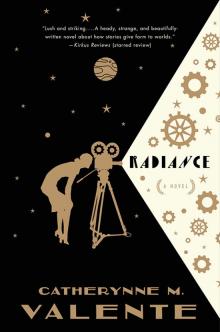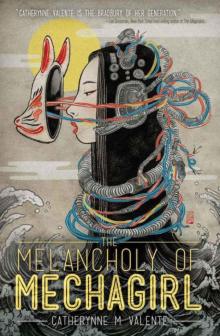


Bodily Harm: A Novel
Dugoni, Robert
He went to work.
CHAPTER
SEVEN
ONE UNION SQUARE BUILDING
SEATTLE, WASHINGTON
John Kannin did a double take when he walked past Sloane’s office the following morning, then stopped and peered in, as if seeing a ghost.
“What the hell are you doing here?”
“Working,” Sloane said.
Kannin walked in and closed the door behind him. Though they were roughly the same age, Kannin had become a mentor for Sloane, perhaps because their relationship began with Sloane hiring Kannin as a consultant on military law, or because Kannin had run his own law practice for nearly twenty years before the two men agreed to become law partners.
“You’re not even supposed to be out of the hospital until the end of the week. Get the hell out of here before I carry you out.”
Sloane had no doubt the man could do it. A lineman when he played football for the Air Force Academy, Kannin had traded bulk for muscle. Sloane had lifted weights at the underground, windowless gym Kannin preferred to the swanky health clubs, so he knew Kannin was country strong.
“When’s the last time you slept?” Kannin asked.
“I’m fine.”
“You don’t look fine. You need rest. You need time.”
“Time is all I have, John.”
Carolyn pushed open the door, nearly hitting Kannin with the edge.
“Good. I’m glad you’re here. Will you please tell him to go home and get some rest,” Kannin said.
Carolyn placed a cup of coffee on a coaster beside Sloane’s computer screen, picked up the cassette tapes from the out-box on his desk, and continued like it was business as usual. Carolyn had never married, and Sloane suspected she knew exactly why he was at work.
As Carolyn departed Pendergrass rapped on the door and poked his head in. Looking from Sloane to Kannin, he asked, “Should I come back?”
“No,” Sloane said. “Come on in.”
Shaking his head, Kannin started to leave.
“John, this involves you too,” Sloane said.
They settled into chairs at the round table near the plate glass windows. Sloane turned first to Pendergrass. “I want you to find out what I need to do to get custody of Jake.”
Both Kannin and Pendergrass gave him perplexed looks.
“I just dictated a memo that Carolyn will give you shortly. Tina’s parents have taken Jake to San Francisco. They want his biological father to raise him.” He stared down Pendergrass. “I want my son back. Do whatever needs to be done to make that happen.”
Pendergrass nodded. “I’ll get right on it.”
Sloane had never had the opportunity to tell Kannin or Pendergrass about his trip to Mossylog or his meetings with Manny Gallegos and Dayron Moore. After filling them in that morning, he handed Pendergrass the Gallegos file. “There isn’t much there. But look into having the settlement agreement set aside for fraud in the inducement, misrepresentation, anything else you can think of.”
He spent the next ten minutes explaining the results of Mateo Gallegos’s autopsy report.
“Magnets?” Kannin asked.
“Apparently they are so powerful they link together through the intestinal walls. When they pinch together they cut off the blood supply to the area and eventually the intestine dies and the magnets corrode through, allowing bacteria to leak into the body cavity. It causes a toxic condition called peritonitis and sepsis.”
“This child in Mossylog suffered similar symptoms?”
“High fevers, vomiting, chills, a lack of appetite, listlessness. Like Austin, eventually he lost consciousness.”
“And his father confirmed the family had one of these Metamorphis dolls?” Kannin asked.
“Robots,” Sloane corrected. “Gallegos works at the Kendall factory in town. They gave him one of the toys as a reward for being a good employee and paid the family fifty dollars to have their son Ricky play with it. Gallegos said his son flipped over it, but also that the plastic cracked, which would have freed the magnets.”
“But we don’t know that for certain.”
“No, we don’t, but it is exactly what Kyle Horgan warned about.”
“And you think that’s what Kendall doesn’t want anyone to know?” Pendergrass asked. “That the plastic is defective?”
“There’s a tremendous amount of money at stake, and based upon what I’ve been reading in the paper, Kendall can’t afford to have anything go wrong.”
Sloane had spent much of the night thinking through possible scenarios and explained his theory that, at Dee Stroud’s suggestion, Kyle Horgan had likely approached Malcolm Fitzgerald with the toy and how, upon seeing it, or at least its design, Fitzgerald must have realized that Horgan was sitting on the next “It” toy.
“Everything would have been fine until Horgan warned about the defective plastic.”
“And then when Mateo Gallegos died, Horgan became a huge problem,” Kannin said.
“Which hit a head when Horgan gave me the file. That’s why the man came. He wanted the file.”
They sat listening to the hum of the computer beneath Sloane’s desk, no one wanting to relive what had happened next.
Kannin’s dark eyes narrowed. “Do the police know about this, David?”
“Without some evidence linking Fitzgerald to Horgan, I can’t link Horgan to the man who killed Tina.”
“You’re that link,” Kannin said. “You have to tell them.”
Sloane shook his head. “If I tell the police they’ll go to Fitzgerald, and he’ll simply deny everything as absurd. Without the file I don’t have anything to prove what relationship, if any, Horgan and Fitzgerald had. Unless Charlie can find Horgan, and I think we have to realistically conclude he never will, we have no way to prove there was one.”
“That’s not for you to decide. You have a man out there that has killed three people,” Kannin said.
Sloane stood. “You don’t think I know that?” He caught himself. “Look, John, this man is not an indiscriminate killer; he kills the people he’s paid to kill. The police are not going to catch him.”
“So what do you propose we do?” Kannin asked.
“We do what we do best. We get Kendall Toys and Malcolm Fitzgerald into a courtroom and put so much financial pressure on the company that it will have to act.”
Kannin shook his head. “How are you going to get them into a courtroom? You don’t even have a plaintiff.” He spoke to Pendergrass. “Unless this guy Moore was in collusion with Kendall, which would be next to impossible to prove, we won’t get the settlement set aside.”
“Did Moore give you any reason for settling so cheap?” Pendergrass asked.
To the contrary, when Sloane had accompanied Moore back to his office to retrieve the Gallegos file, Moore had defended his settlement. “He said the child could have died from the rusted nail, that they had no proof the magnets came from the Metamorphis toy. The family no longer had it, and since it was a prototype he had no ability to get one like it.”
“He didn’t even try?” Kannin asked.
Sloane shook his head. “He wasn’t looking for a fight. I think he was afraid of the law firm.”
“Who is it?” Kannin asked.
“Reid Matheson.”
Kannin smirked. “He probably felt like Custer at Little Big Horn; he’d have been outnumbered five hundred to one.”
“He never even filed a lawsuit,” Pendergrass said, flipping through the file. “To settle that case for fifty thousand dollars without doing any discovery at all was criminal.”
“Not if he couldn’t prove the magnets came from the toy,” Kannin said. “So we’re right back to the same problem, no plaintiff.”
Sloane paused. “Maybe not.”
Kannin leaned forward. “The McFarlands? Come on, David, that case is over; a judgment’s been entered. And other than that not-so-small legal hurdle, we don’t even know whether the McFarlands ever came in contact with the t
oy. This is all just speculation.”
“But if I can place the toy in both homes, with the boys suffering the same medical symptoms, then you’d agree that I have something, right?”
“Yeah, you’d have something, but again, the case is over. Have you even talked to them about any of this?”
Sloane shook his head. The McFarlands had left town for a vacation after the trial, and he had been in no condition to talk to them since.
Pendergrass stood from his chair and gathered his papers. “I’ll run a search and see if I can find any other articles on any other kids dying or being hospitalized with flulike symptoms during the past four months. Who knows, maybe there’s another one out there. And I’ll see if there are any complaints about Kendall in general or about this particular toy.”
“I don’t mean to be the one always throwing cold water here,” Kannin interjected, “but even if you can place the toy in the McFarland home you still have to prove Austin ingested magnets. Until we know that, we’re just spinning our wheels. And . . .” Kannin hesitated. They all knew there was only one way to find out. “Are you really sure you want to go down that road? Austin is dead, David. Nothing we do will change that. Do you want to run that family back through this?”
Sloane had thought about the implications of pursuing the matter and he didn’t want Pendergrass or Kannin to think he was involving them or the two families in a personal crusade.
“I’m not going to sit here and tell you this isn’t personal,” he said. “It is for me, but not for you. For you it’s a legal case. This company may be responsible for the deaths of two young boys, and if this toy gets mass-marketed, it could be a danger to millions of other children. I know we can’t bring back Mateo Gallegos, or Austin McFarland, but don’t we have a responsibility to try to save at least one more family from the grief and agony of having to bury their child? Don’t we have an obligation to go after a company that would do something like this?” Sloane looked to Pendergrass. “And if I’m right, Dr. Douvalidis didn’t deserve this. He wasn’t responsible.”
Pendergrass looked pale.
“Hey, you’re preaching to the choir,” Kannin interjected, breaking the tension. “But we’re not the ones you have to convince. Even if you’re right and you can somehow get the Gallegos settlement thrown out, you already obtained a judgment in the McFarland case. It’s over.”
“I think that could actually help us,” Sloane said, one step ahead after a night mulling through the legal hurdles.
As Sloane explained his plan, Kannin sat back, smiling. When Sloane had finished Kannin said, “I don’t know if it will work, but it’s going to kick up one hell of a lot of dust.”
Sloane stood. “Tom, see if you can find any precedent for it. I’ll be back in a few hours.”
“You want me to go with you?” Pendergrass asked.
Sloane shook his head. He would handle it alone.
GALAXY TOYS’ HEADQUARTERS
PHOENIX, ARIZONA
WITH THE AMOUNT of stress in her life she should have had the figure of a freaking model, but Maxine Bolelli had spent all her life battling her weight, which was why she sat in her private dining room atop Two Arizona Center staring at bird-sized portions of grilled chicken, broccoli, and brown rice. Bolelli hadn’t eaten a bite.
She pushed back from the table and walked to the windows, looking south to the duel spires of St. Mary’s Basilica with its red tile roof. In 1987, Pope John Paul II visited the 130-year-old mission-style church and elevated it to a minor basilica. Two blocks over on Fifth were cathedrals of another kind, Chase Field, home to the Arizona Diamondbacks baseball team, and near it, U.S. Airways Center, where the Phoenix Suns played basketball. Galaxy kept a corporate suite at each facility and had its corporate name plastered inside nearly every civic facility in Phoenix. The expenditure was necessary advertising, but Bolelli wanted to retch each month when she saw the amount spent to keep the Galaxy name front and center in the community.
She turned from the window at the sound of Brandon Craft striding into the dining room. Craft had the smile of a kid bringing home an A on his report card.
“It’s an action figure.”
Bolelli rolled her eyes. “I assumed it was an action figure. Kendall makes action figures.” Her tone conveyed what she did not verbally express: Idiot.
“There’s more,” Craft said, recovering from the initial blow. “It’s an action figure the child builds on his own, using plastic pieces, anything they can imagine.”
“I’m impressed, but not much.”
“The figure can morph into other shapes the child chooses.”
“Been there, done that.”
“Not by remote control.”
“That’s not technically possible.”
“Apparently it is.”
“How?”
“Magnets.” Craft sat, smiling again.
“Tell me.”
“High-powered magnets act in concert after receiving an electrical pulse.” Craft sounded giddy. “Can you imagine the potential? A child can design and create an action figure to his own specifications, whatever he wants, and then program it to change into whatever else he can imagine and build, a boat, plane, tank, helicopter. When he gets bored, he changes it. It transcends age limits. Hell, there are adults out there who would want one. Apparently the focus groups were off the charts.”
Bolelli stepped forward. “Focus groups? How far along are they?”
“Already in production, and”—Craft paused for dramatic effect—“I’m told they’re having the manufacturing done at a factory in China.”
“China? Kendall doesn’t use Chinese manufacturers.”
“Apparently they do now,” Craft said.
“Can we find out which one?”
“I already have somebody working on it.”
“Why would Fitzgerald go to the trouble of using a Chinese manufacturer?”
“They’re in financial trouble. They need to cut manufacturing costs or implement huge layoffs,” Craft suggested.
Bolelli shook her head. “Sebastian Kendall has always been a hard nut to crack. I don’t see him going to China for financial reasons.”
“Maybe not, but Fitzgerald is the new regime.”
“No. Not yet. Not with the old man still alive. This goes against everything Kendall has professed to stand for. Fitzgerald wouldn’t do this unless he was concerned about something.” She paced. “He’s trying to keep this completely under wraps; he sent it overseas so no one would find out.”
“He’s hiding it?”
She stopped, turned. “Wouldn’t you? Think about it. He keeps it completely under wraps and launches it right for Christmas. He’ll create a run at the stores, like when Tickle Me Elmo came out of the blue. It will be the toy of the season.”
“It is amazing,” Craft said.
“Need I remind you, Brandon, that it is not our toy?”
The smile vanished.
“So where did it come from?” Bolelli asked.
“No one knows. No one recalls seeing anything like it in New York or Germany,” Craft said, referring to the two biggest annual toy fairs. “Maybe Kendall’s in-house design team came up with it.”
“If that were the case then why didn’t Santoro tell you about it?”
Bolelli knew Craft and Santoro had been talking since Galaxy first approached Kendall with an offer to buy the company. Not believing she’d get far with Fitzgerald, who had a perverse sense of loyalty to Sebastian Kendall, Bolelli had sought an advocate inside the company and didn’t have to go far. Santoro was disgruntled after Kendall passed him over in favor of Fitzgerald. Since Santoro and Fitzgerald were roughly the same age, Santoro’s prospects of ever running that company were slim at best. That meant he’d be looking for another opportunity, or more money. Not wanting a paper trail leading back to her, Bolelli arranged for Craft to attend a trade industry conference she knew Santoro was attending. Craft came back with his chest puffed, as if he w
ere the next James Bond, advising that “someone” at Kendall was unhappy with his situation, might be looking for greener pastures, and with a little persuasion, might just be willing to provide Galaxy with inside information on a company Bolelli coveted. Bolelli had played along, telling Craft to pursue it. Once she had acquired Kendall she’d fire both Craft and Santoro. She knew from personal experience that if a man cheated once, he’d cheat again, and no one was ever going to cheat on her again. Besides, what could Craft or Santoro do, sue and have the information about their clandestine meetings come out in public? They’d never get another job.
“He said he didn’t know about it until Fitzgerald broke it out at a board meeting. No one on the board had ever seen or heard of such an idea.”
“Which means Fitzgerald must have suspected someone was leaking information and is keeping everything about this toy very close to the vest. That’s why it’s being produced in China.” She thought for a moment. “That board meeting was weeks ago. Why didn’t Santoro tell you about this sooner?”
Craft opened his mouth as if to speak, but instead his face twisted, as if considering a complex mathematics problem.
“He’s getting cold feet,” Bolelli said, starting to pace again. “If this thing is as good as projected, Kendall’s revenues will go through the roof, and so will their stock. Santoro could sell and be worth three to four times what he’d get in salary here. He’s playing you, Brandon.” Before Craft could respond Bolelli changed gears. “Have you discussed the concept with our design people? Can we duplicate it?”
“They say it can’t be done.”
“Well, tell them someone has already done it, damn it.” Bolelli stopped pacing. “Oh shit!”
“What?”
“Titan. If Ian gets wind of this he’ll be on it like stink on shit. Why the hell did we go public with our offer?”
“I tried—”
“Kendall will need help with distribution and getting retailers to agree to prime shelf space right out of the gate. Damn it! Fitzgerald and Ian are probably already working on it together.”

